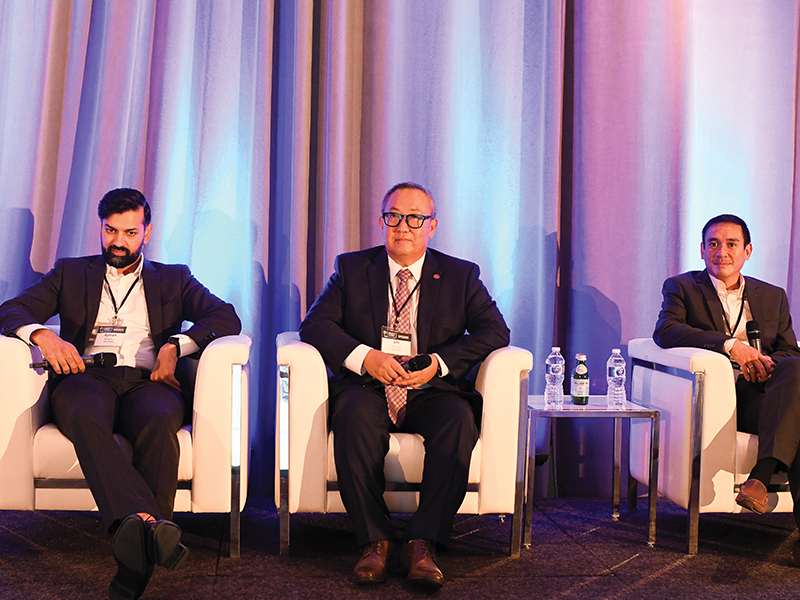

Financial education and well-being initiatives are in the spotlight as employees face the stress of multiple financial headwinds — from inflation reaching a 40-year high to the strong likelihood of an impending recession — and search for advice and clarity.
“There’s a very strong correlation between financial wellness and mental wellness,” said Dr. Jim Chung (centre), chief medical officer at Air Canada, speaking during a panel at Benefits Canada‘s 2022 Healthy Outcomes Conference. “Financial wellness was something that most of us didn’t talk about five years ago, but now it’s become a very important topic.”
Indeed, the organization recently revamped its financial wellness approach after realizing it was in a bit of a rut, he said. Previously, it sent around the same registered retirement savings plan reminders every January and tax season messaging every April, but didn’t see much engagement. So it engaged a financial wellness consultant to create topical, timely and brief content, such as explainers on how employees can fight inflation in their grocery bill and what new credit card transaction fees mean for them, as well as special sessions on topics such as love and money.
Read: Equitable Bank recognized for comprehensive financial wellness program
The most important part of employees’ financial well-being is appropriate compensation, said Michael Dimaano (right), manager of total compensation and human resources policy at the Ottawa Community Housing Corp., noting the organization regularly benchmarks its compensation against peers to ensure staff are being fairly and competitively paid.
The OCH is also focused on helping employees make the most of their pay by enhancing its paramedical coverage and adding a healthy living account — which combines its existing, but under-utilized, health-care spending account and wellness account — that employees can use on expenses that fit their lifestyle. It’s also planning to introduce a portable and affordable optional life insurance plan that employees can take with them if they leave the organization.
Scotiabank is also getting creative by seeking out employees who are looking for guidance on specific issues to create examples that help educate the broader population, said Ayman Alvi (left), vice-president of global pension and benefits. Examples include a single mother trying to save for her child’s education and a young person trying to break into the real estate market. The bank shared practical advice from its financial advisors and tied the advice back to how they could use their benefits program.
Read: How are personalized communications connecting with employees?
More recently, Scotiabank ran seminars on long- and short-term savings, which were so popular it’s planning to host them more regularly, said Alvi. And a recent financial benefits week event hosted by the bank highlighted the employee demand for more information, which he wants to build on.
While employers may tend to focus on promoting their retirement offerings as a key pillar of financial literacy, Dimaano noted the fact that there are now four generations in the workplace means each group is facing their own financial challenges and milestones. “We had to change the approach, so we inserted investment and savings readiness [sessions], which generated [a larger] audience.”
Read more coverage of the 2022 Healthy Outcomes Conference.
